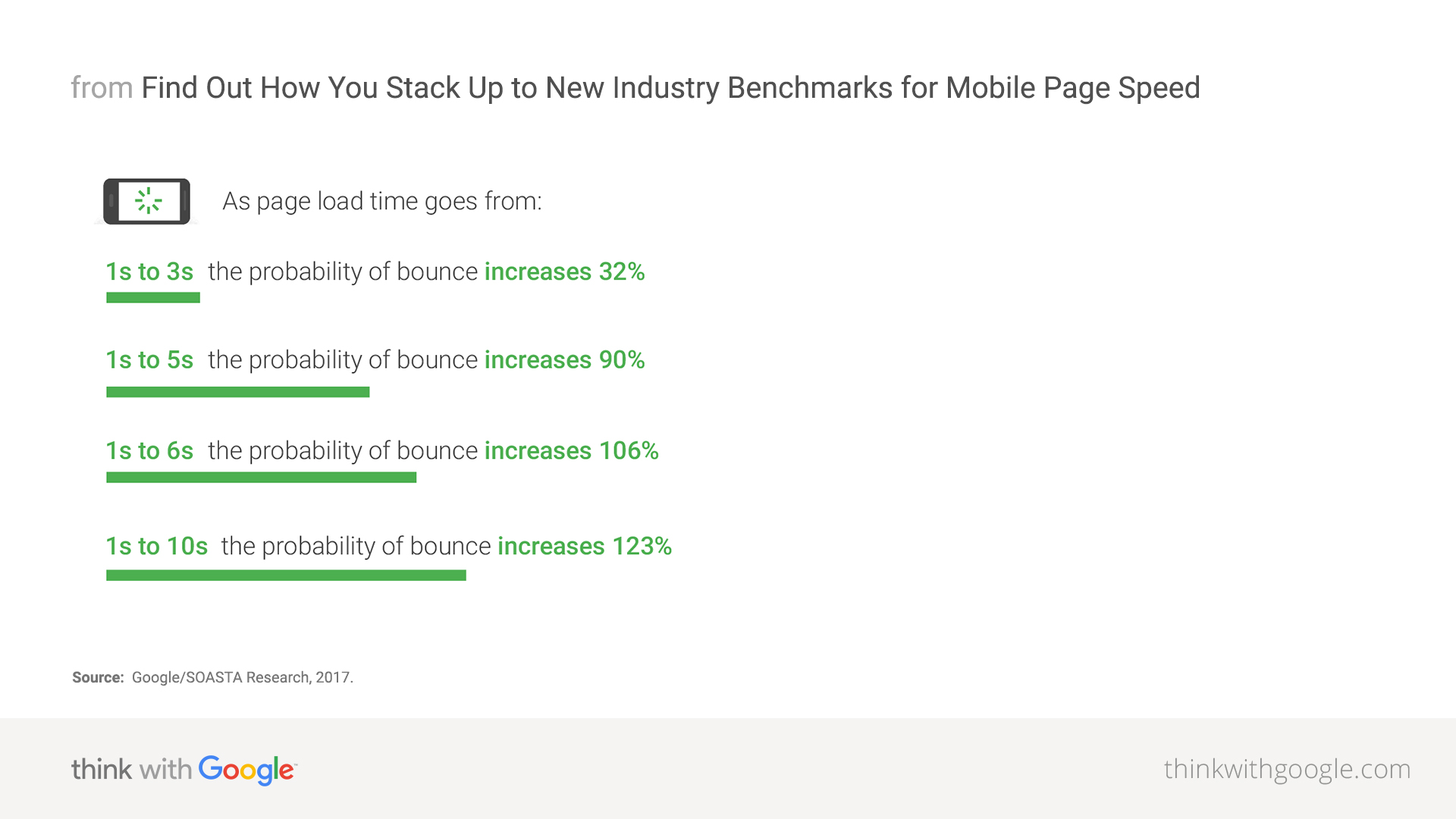
The Relationship Between Page Speed and Website Sales
What determines the success of a website? For many, a good website is one that encourages a high number of conversions, therefore boosting profit. So, it may surprise you to know that you can have the most incredible website full of fabulous marketing materials and boasting some of the most amazing content, but those all-important conversion figures can remain low.
The Need for Speed
There have been many independent studies into the relationship between page loading speed and conversions or sales via an eCommerce website. The key indicator of these is the bounce rate. This represents the number of people who land on your website but don’t browse further than that single page. This is likely to do with the amount of time it has taken for that page to load. The longer a website user has to wait for a page to load, the less likely they are to spend time browsing the rest of your site.
According to Think with Google, the best sites tend to load in under three seconds, although they can still experience a bounce rate increase of 32%. Add just two more seconds to that delay and that bounce rate increase is 90%! A site that takes up to ten seconds to load can expect a bounce rate increase of 123%.

Source: Google/SOASTA Research, 2017.
The Benefits of a Low Bounce
Clearly, the bounce rate is an important factor when it comes to having a website that works for you. The user experience is key and dissatisfied users are unlikely to make a purchase or recommend a company to their friends, which can have a direct impact on the number of visitors to your website. If a user has a hard time loading a page, they are also unlikely to return. But a low bounce rate has more impact than that.
When it comes to being high up in the search engine rankings, an effective SEO campaign should be your foremost concern. However, if your website has a high bounce rate, all that hard work could be completely wasted. Search engines like Google record all your website data and a high bounce rate can be indicative of disappointed users. This can lead to lower search engine rankings which will reduce the number of people who even find your website in the first place!
So, working to keep your bounce rate low and your site speed high can increase customer satisfaction, improve your search engine rankings and boost the number of visitors to your website. It also has a direct effect on conversions, since potential customers will be able to find your website more easily and have a seamless shopping experience.
How to Make Your Site Faster
Unfortunately, some of the reasons your site may be slow are out of your control. For example, the user may be working with a poor network. You can look at minification, compression and hosting with a CDN to improve this, but these techniques can only do so much.
Location can also be an issue. If you run an international company, you may find users in other parts of the world struggle to load the site as quickly as someone who lives around the corner to your website host.
However, you can work on reducing the weight of your site so that it is generally a lot quicker to load. To do this, you need to limit the number of large files on your landing page. Anything that requires Javascript to run will slow your load speed, as will video content, HD images and a large CSS files. As website technology improves, it can be tempting to fill your site with all-the-more impressive visuals, but generally, the simpler your site, the easier it will be for the user.
There are internet tools that will help you check your load speed, but the best test is to ask employees, friends and family to check the website at different times of day to ensure it is working in an efficient and easy-to-use way.
eCommerce Web Design
Updated: May 24, 2021